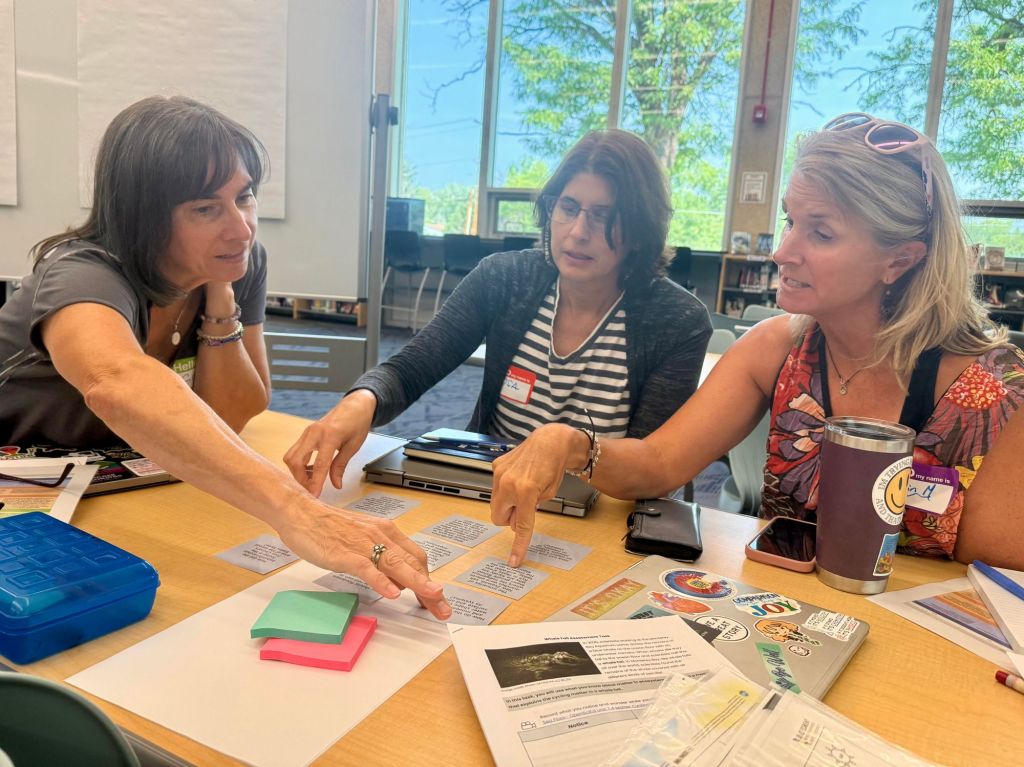About a dozen educators gathered in the library at Boulder’s Platt Middle School on Thursday to get a primer on using the state’s science standards to engage and motivate students while giving them a deeper understanding of science concepts.
The Colorado Department of Education is collaborating with the University of Colorado Boulder’s InquiryHub to provide K-12 science teachers with professional learning aligned to the science standards. The sessions are free to teachers and funded with state dollars through a bill passed by the state Legislature in 2024. Teachers can also use the training to earn credit for license renewal.
The department has offered several of the six-hour sessions so far, with more planned throughout the state over the next few months. For those who can’t make it to an in-person session, there are virtual sessions on Aug. 5 and Aug. 7. Educators are invited to register for a session at cdeinfo.org/sciencetraining.
While previous versions of the state’s science standards focused mainly on content, the current version asks teachers to go more in depth on a smaller number of topics and make sure what they’re teaching hits three main areas: core ideas (the what), science and engineering practices (how science is done), and the patterns that connect and link different scientific ideas to one another (why it matters).
Thursday’s session was attended by teachers from the Boulder Valley, Adams 12 and Westminster school districts and taught by Erin Mayer, a science teacher at Boulder’s Casey Middle School, and Keyerria Howard, who works in Denver Public Schools.
Mayer has been using similar methods in her own science classes for years, pulling ideas from the Next Generation Science Standards and OpenSciEd, an open source for curriculum materials.
She starts a lesson by introducing a phenomenon — something puzzling that can be figured out with science. Students make observations and ask questions, then model what they think is going on. Next, the class creates a “driving questions” board. Students generate and categorize all their questions, which are posted on the board, and come up with ideas for investigations to figure out the answers. Mayer uses their ideas to plan out learning activities. At the end, students revise their original models based on what they’ve learned.
“It’s using interesting things you see to explain science,” she said. “It’s a lot of trying it out on the kids’ end and then using evidence to support their ideas. It’s inquiry focused and super student centered.”
Rosa Medina, a gifted and talented advisor at Lafayette’s Escuela Bilingüe Pioneer Elementary, said she signed up for the workshop both to learn more about the standards as she creates projects for students and to make connections with other teachers.
“My students love to do science projects,” she said.
Kristin McLaurin, who teaches seventh grade science at Louisville’s Monarch K-8, wanted to learn best practices for integrating the science standards from a student lens. Using real life problems is what gets kids excited to learn science, she said.
“I want to get ready to go back to the classroom and get some fresh ideas from my colleagues,” she said.
Originally Published: July 31, 2025 at 2:24 PM MDT
